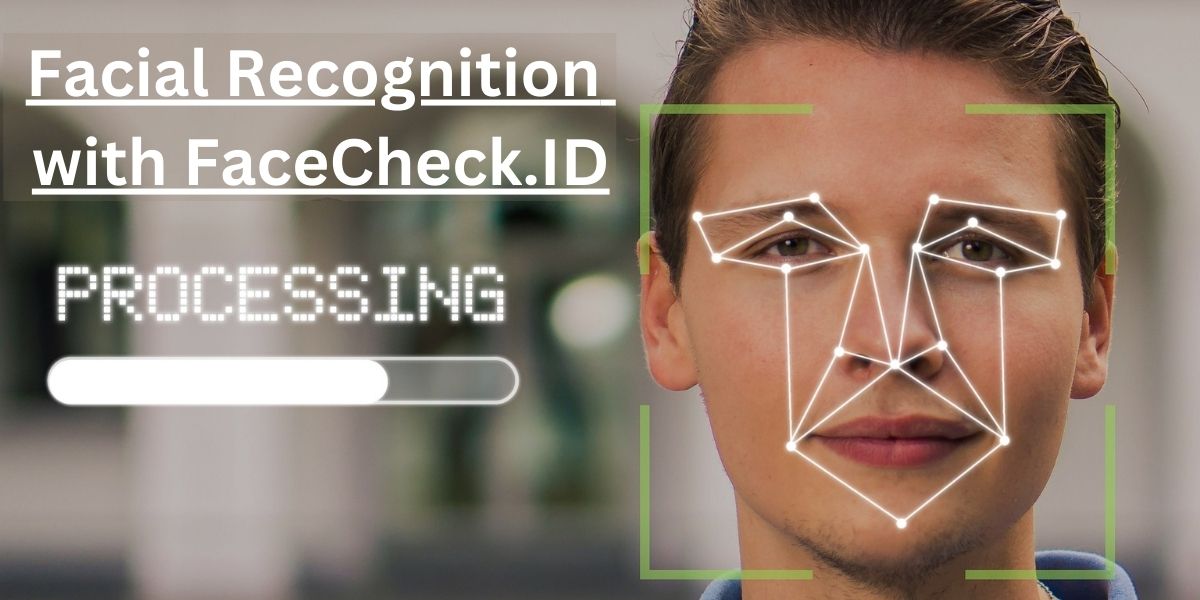FaceCheck.ID has become a potent tool in the digital age, where anonymity appears to be a thing of the past. It simultaneously arouses curiosity and anxiety. Although the complex workings of this facial recognition search engine conceal a web of moral conundrums and cultural issues, it offers convenience and safety. Analysing the technology and its possible effects reveals an exciting, but yet sobering, history of advancement.
What if Facecheck.id?
FaceCheck ID is essentially a face-specific reverse image search engine. When users upload a photo, the website searches through its enormous database to see if it matches any current accounts on different social media sites. Potential matches are listed in the ensuing report, along with links to their social media accounts and projected confidence scores.
How does it operate?
FaceCheck.ID makes use of facial recognition technology, a sophisticated kind of artificial intelligence that recognises people based on their facial features. Advanced Technology analyses submitted photographs to extract distinct biometric indicators, which it then compares to its library of pre-existing facial data. The quantity and quality of the database determine how accurate this procedure is; larger, better-quality photographs produce more accurate matches.
FaceCheck.ID’s Allure: Potential Advantages and Uses

- Individual Security and Confirmation
- Preventing scammers and online dating
- Fraud detection in Internet-based transactions
- Verification of social media profiles
- Investigative and law enforcement
- Recognising potential criminal suspects
- Finding those who have gone missing
- Fighting crime networks and human trafficking
- Access Control and Security
- Permission to enter restricted spaces or devices
- Improving monitoring systems to deter criminal activity
Issues and Remarks
FaceCheck.ID is also subject to harsh criticism:
Privacy violations: Without consent or sufficient openness, there are worries about the acquisition and storage of facial data.
Data security: The possibility of data breaches or leaks may reveal personally identifiable information.
Misuse and discrimination: The technology may be applied unfairly for discriminatory, profiling, or stalking intent.
Accuracy and bias: It has been demonstrated that facial recognition algorithms exhibit biases, which raises questions regarding unfair targeting of particular populations and erroneous identification.
Breaking Down the Algorithm:
FaceCheck.ID is essentially a reverse image search engine for faces. Using facial recognition technology (FRT), users upload photos to the platform, which then uses them to scan a large database of social media profiles. To establish a digital signature, FRT analyses distinctive facial features and extracts markers such as the curves of the jawline and the distance between the eyes. After that, this signature is compared to already-existing profiles to produce confidence scores and possible matches. The complex algorithms are what work their magic, but the results of using them must be carefully considered.
The Basis of Facial Recognition Technology (FRT)
FRT is an example of a biometric system that uses facial feature analysis to identify and characterise people. To generate a digital representation known as a facial template, it uses algorithms that extract distinctive facial cues, including the space between the eyes, the curve of the nose, and the jawline. The foundation for comparison with various facial picture formats is these templates.
The Negative Aspect of the Lens: Moral Issues and Difficulties
- Invasion of Privacy
- Unauthorised facial data collection and storage
- Unauthorised monitoring and tracking
- Possibility of abuse by businesses or governments
- Security of Data and Its Misuse
- Dangers of data leaks and breaches
- Possibility of discriminatory profiling
- abuse by shady characters or stalkers
- Precision and Prejudice
- Biases in algorithms and misidentification
- unfairly focusing on disadvantaged populations
- Effects on equity and social justice
The Enticing Prospects: An Intimation of a More Secure Future?
FaceCheck.ID proponents emphasise how it can improve our lives in several ways:
Personal Safety: You may reduce the risk of fraud and catfishing by verifying internet relationships, especially when dating or making financial transactions.
Law enforcement: FRT may be very helpful in situations involving the identification of suspects, the search for missing persons, and the suppression of human trafficking.
Security and Access Control: Simplifying access control systems, safeguarding restricted areas, and enhancing airport security all contribute to increased convenience and safety.
These possible advantages suggest a more secure and safe planet. On closer inspection, though, the other side of the coin—shadows hiding behind the promised sunshine—becomes apparent.
The Dunes of Doubt: Moral Minefields and Possible Abuse
A flurry of ethical concerns accompany FaceCheck.ID’s appeal:
Privacy violations: The collection and storage of facial data without express consent raises serious concerns about individual autonomy and the right to privacy. Data breaches and widespread spying become horrifying possibilities.
Data Security and Abuse: Sensitive information may be exposed due to security breaches or unauthorised access, and bad actors or governments may misuse the information to create discriminatory profiles and dominate social media.
Accuracy and Bias: Biases in algorithms, especially those directed against marginalised populations, can cause unfair targeting and misidentification, aggravating already-existing disparities.
These worries paint a dystopian future in which technology threatens freedom and equality.
Getting Through the Maze: Moving Forward with Responsibility for FRT
It takes a team effort to maximise the benefits of FRT while reducing its risks.
Transparency and Consent: People must be made aware of the purpose and methods for collecting their data, and their free and informed consent must be acquired.
Data security and protection: To protect sensitive data, it is crucial to have explicit deletion procedures, frequent security audits, and strong data encryption.
Accountability and supervision: To guarantee responsible FRT development and stop misuse, independent supervision mechanisms and regulatory frameworks are essential.
These actions set the stage for a time when technology works for people, not against them.
Going Beyond FaceCheck.ID: A Shared Duty

There is more discussion on FaceCheck.ID than on just one platform. It illustrates the necessity of having a group conversation and acts as a microcosm of the larger problems that FRT presents. Public education, open discussion, and collaborative efforts from the government, business, and civil society will shape the future ethical and responsible use of FRT.
Conclusion
FaceCheck.ID offers a peek inside the two-edged sword of facial recognition. Although there is no denying its potential benefits, it is important to carefully assess the ethical issues and potential for misuse. We cannot guarantee that FRT is an instrument for good, shedding light on a route to a safer and more just future for everybody, unless we take collective responsibility, exercise informed use, and demonstrate a strong commitment to ethical standards.
Extra Things to Think About
- The Prospects of Facial Recognition Technology
- Prospective developments in technology and their effects on society
- investigating different strategies (such as biometrics based on speech or movement)
- Worldwide Views
- Differences in FRT adoption and regulation between nations
- International cooperation and common ethical standards are essential.











